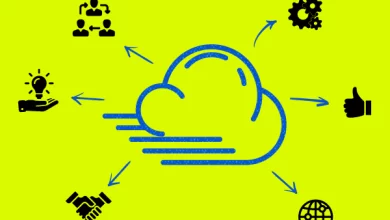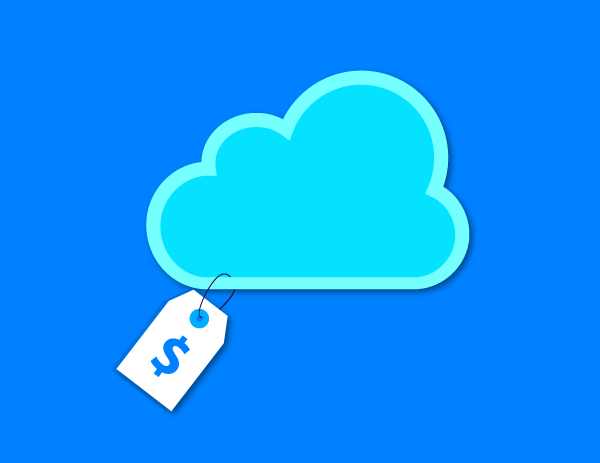Customer Service In The Age Of Customer Influence

Assuming that you operate a customer contact center that fields hundreds, thousands or possibly even tens of thousands of contacts on a daily basis, do you assign each customer the same status on inbound or outbound interactions? Perhaps you’ve already implemented some basic segmentation strategies and route customers into different queues based on their historical spend, lifetime value to your brand or the service package that they’ve purchased. Or perhaps you’ve taken the stance that all your customers deserve your fullest attention.
But there’s a new segmentation game in town, and you need to decide whether or not you’re playing. Social media platforms and online review sites have created a new axis of “customer value” in which individual customers can exert significant influence on your service reputation. Given the digital customer insights tools that are available on the market today, you now need to decide whether to go a step further and start segmenting customers based on digital attributes such as influence, social status and public advocacy.
Should You Segment by Digital Attributes? A CX Pop Quiz
Would you answer “yes” or “no” to digital segmentation at your contact center? If you are willing to make the hypothetical leap into the food services industry for just a moment, perhaps a customer experience pop quiz will help to crystalize your position on this one.
Let’s say you own and operate an upscale eatery in the hyper-competitive New York City restaurant scene. Your floor manager barges into your office and tells you that she’s certain that the party of one that just sat down at table 11 is actually the food critic for The Times. What do you do?
You:
- A) Do nothing—after all, every one of your customers is important so why should you single out any one of them for special treatment? Besides, because of the stellar service and food prep standards you set and achieve on a daily basis, you know the critic is going to receive an excellent experience.
- B) Go over to table 11, welcome him warmly, and say, “Aren’t you Tad O. VerKookt from The Times? It sure is a pleasure to have you dining with us this evening. Please allow us to offer you a free selection from the dessert tray when you’ve finished your meal.”
- C) Quickly and quietly assign your most pleasant, knowledgeable and engaging server to table 11, and quietly let the kitchen know that the order for 11 has to be triple-checked and perfect before it is sent out. You instruct your floor manager to double her efforts to connect with all the patrons in the room including table 11, asking how their meal is, and whether there is anything else she can do.
If you chose A, you are confident, principled…and a risk-taker. Good on you for your egalitarian view of your customers, and bravo for the ice in your veins, but has even your best server never had a bad shift or gotten snippy with a customer? Has your kitchen never once goofed with a wrong order or substandard plate? Are you really going to play roulette on this one and trust that the odds are in favor of the house, or should you rather be proactively removing each small, remote risk that could undermine table 11’s positive experience?
Nooo… seriously, you didn’t choose B, did you? Your offer of a free dessert, which under completely different circumstances could be viewed as delightful service, will be perceived in this case as cheap bribery. He knows that you know, and so every perk, pleasantry and grace you offer will be interpreted as currying favor and a tepid attempt to purchase a tasty review. This approach is inauthentic.
Hello all you pragmatic customer experience professionals who chose C. Nice work. You gained insight and acted upon it to ensure a positive experience for Tad without being inauthentic, without adding cost to your operations, and without sacrificing the experience of the other diners. You recognized the marketing and revenue benefits of delighting a high influencer. You seized an opportunity to acquire hard-to-obtain but highly prized earned media. You grasped the importance of advocacy and reputation, recommendation and user reviews. You deserve the fruits of Tad’s eventual positive assessment.
But man oh man, were you ever lucky your manager recognized him!
Why Leave It to Chance?
Don’t we all agree that we need to know our customers, regardless of the business we’re in? And I don’t mean in general (such as, “59% of our customers are female”) and I don’t mean after the fact (such as,“Peter who called to complain about his rate last week—turns out he cancelled and went with a competitor”). That level of insight is the bare minimum. Rather, I mean that we need to know them individually and in real time, as they come in off the sidewalk and are seated at table 11.
Admittedly, real-time individual customer insights are going to be tough to get in a restaurant environment. Many customers will be first-timers, and there are few effective ways to collect personal data for even those who stop by often. However, most of us work daily in contact centers where we have access to CRM systems rich with data that, in combination with powerful new insights available through social media and online channels, can be leveraged to paint a much more complete picture of your customer. These days, it really is possible to know in real time that Peter is unhappy about his rate and is flirting with the competition. It really is possible to know in real time that the customer on the phone with you is a tech gadget journalist, or that she is a brand advocate.
To say that all customers should receive the same excellent experience sounds noble, but is largely unattainable for most service organizations. Companies with a reputation for uniformly excellent customer service (the usual suspects, such as Zappo’s, Trader Joe’s and Apple) typically either organize their entire business models around service excellence from their very inception, or else they make large midstream investments in the tools, training and culture-building necessary to alter their core strategies and shift into an intensive customer-centric approach. The rest of us, with a more typical focus on call duration, cost efficiencies, and tight call center scripting would probably blanch at the prospect of empowering customer service reps to freely go off-script, or celebrating multihour support calls. The costs of making such a fundamental shift are prohibitive for most, and seem to be at odds with our long-standing operational KPIs.
The neat trick would be to find a call center tool or process that would net significant improvements in customer service without incurring huge costs in terms of money and effort. Advances in social media and web data analysis provides us with exactly that opportunity.
Rather than a wholesale shift in tools, metrics and culture, the effective use of a social insights and segmentation tool enables us to improve our customer experience (or at the very least our reputation for customer experience) in small and attainable steps. Instead of trying to delight everyone, we can strategically identify key influencers and advocates, and then recruit them to promote awareness and even sell on behalf of the brand. In the end, the net result will be nearly the same, but accomplished with far less cost and without spinning the entire service organization 180 degrees in the opposite direction.
Social CRM in Action
Given that social listening and social CRM solutions now make it possible to identify and key in on specific groups of customers for special treatment, whom might you be interested in singling out? Here are four examples where the knowledge of certain key customer attributes could help you achieve specific service and marketing objectives:
DETRACTORS
Find out who these customers are and place them into a dedicated queue or escalate them to a retention team. Win them over with an appropriate perk or status upgrade. Promote them to advocates.
ADVOCATES
Analyze Twitter and Facebook data to determine when one of your social media fans shows up in your queue. Serve them exceptionally well, and promote them to raving fans! Then respectfully ask them to share their experience with an online review or social mention.
HIGH INFLUENCERS
Know when a customer with 20,000 Twitter followers hits your service queue. Serve them exceptionally well, and wrap up the call with a polite request to share their experience with their followers.
JOURNALISTS/BLOGGERS
Identifying these types of customers not only helps you play defense against a potentially public service failure, but more importantly, it’s a valuable strategy for recruiting a potent offensive force to gain earned media for your brand.
Service failures and triumphs are being shared publicly on digital channels like never before. The discerning use of an effective social insights tool in your customer service workflows enables you to know in real time which of your customers has the potential to significantly harm or help your brand’s digital reputation for customer service. Those customers will be in the minority, at least for now. The majority will NOT have built up large networks of followers or have the potential to reach out to thousands of potentially new customers for your business. Is your normal day-to-day customer service going to be good enough for them? If you are paying any kind of attention to your customer experience, it probably will be. That’s great news, because it means you don’t need to change a lot to gain significant reputation improvements.
What are your service reputation objectives? Do you want more Twitter followers? A greater number of positive reviews on TripAdvisor? A positive write-up in an online journal? Focus on the specific customers that can realistically help you achieve those goals. Rather than sending a follow-up tweet after a service experience to all your Twitter users (including those with two followers and one lifetime tweet since they joined in 2008), reach out to only the most active. Determine who among your customers are your greatest advocates and actively solicit that group for an online review—but only after you’ve genuinely wowed them with a great service experience.
By keying in on the minority of customers that ARE connected, you can set to work building your online service reputation in a very precise and cost-efficient manner. Identifying, delighting and recruiting the influential costs a lot less and requires less retooling than attempting to delight everyone. Pay special attention to the influential minority. Convert the detractors among them to advocates. Promote advocates to raving fans. Recruit them to evangelize for you. Reap the benefits of advocacy and earned media.
The propensity of our customers to relate either good or bad experiences probably hasn’t changed much over the past 15 years. But in that same time, the raw numbers of ears and eyes that some of them can reach has skyrocketed, leading many to claim that we are now living in the age of customer influence, or some variation on that theme. Public platforms like Amazon, Yelp, TripAdvisor, Twitter and Facebook carry our opinions far beyond traditional spheres like family and friends, colleagues and schoolmates. Some of our customers wield greater social influence, others less. The smart marketing and customer experience professionals understand the power of knowing who is who in real time, and they are looking for the tools that will harness the power of segmentation to create attainable, sustainable advantages.
– Reprinted with permission from Contact Center Pipeline, www.contactcenterpipeline.com




